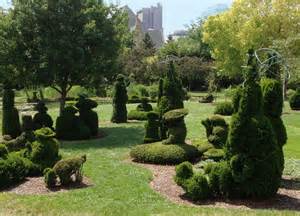
Rousham House and Gardens, located in Oxfordshire, England, is a place of breathtaking landscape. It was laid out by the iconic designer, William Kent (1685-1748). The Gothic style house, built in 1635, is still owned by the original family, and Kent's work remains as he designed it all those years ago.
The gardens cover about twenty-five acres, and include small temples and statues of Roman gods and mythical creatures. If you visit, wear comfortable walking shoes. Your wanderings will take you past a herd of longhorn cattle, to grottoes and pools, and onward to vast, open spaces. One path, known as the Watery Walk, follows a slim stone channel that curves downhill under beech and oak trees and leads to a beautiful view of the River Cherwell.
The gardens are open daily from 10:00 AM to 4:00 PM. Children under fifteen are not allowed. (Neither are dogs.) Cost of admission to view the gardens is 5 pounds. Tours of the house must be arranged prior to visiting. The cost per person is 10 pounds, but you must come with a group. The minimum fee is 120 pounds.









































